Rogozin removed as head of Roscosmos as seat barter agreement signed
Friday, 15 July 2022 15:46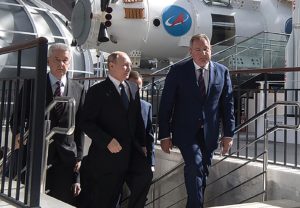
The Russian government dismissed Dmitry Rogozin as the head of the space agency Roscosmos July 15, the same day the agency and NASA signed a long-anticipated agreement to exchange seats on flights to the International Space Station.
NASA releases Webb images of Jupiter
Friday, 15 July 2022 12:59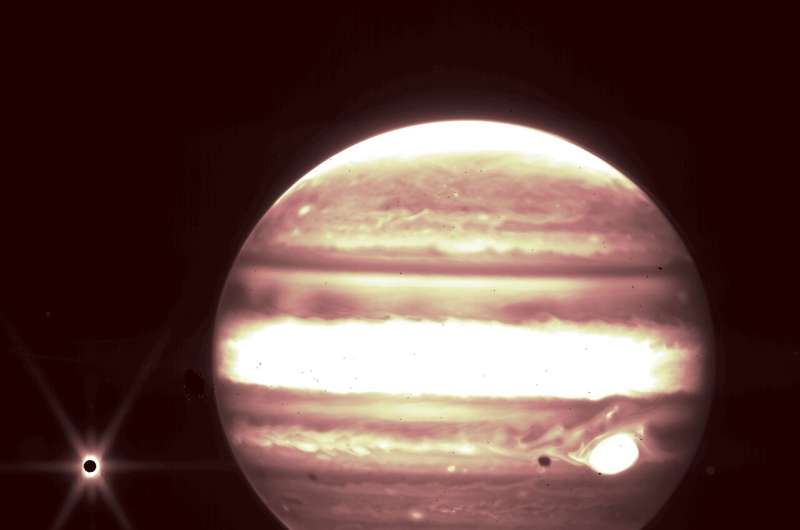
On the heels of Tuesday's release of the first images from NASA's James Webb Space Telescope, data from the telescope's commissioning period is now being released on the Space Telescope Science Institute's Mikulski Archive for Space Telescopes. The data includes images of Jupiter and images and spectra of several asteroids, captured to test the telescope's instruments before science operations officially began July 12. The data demonstrates Webb's ability to track solar system targets and produce images and spectra with unprecedented detail.
Fans of Jupiter will recognize some familiar features of our solar system's enormous planet in these images seen through Webb's infrared gaze.
Op-ed | No Borders in Space
Friday, 15 July 2022 12:47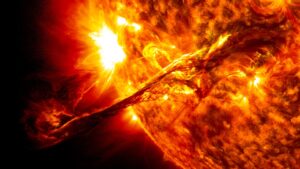
As the Sun becomes more active after a nearly three-year activity slumber, the massive solar storms that lie ahead of us for the upcoming several sunspot-cycle years will not respect any geographic boundaries or political borders.
NASA, SpaceX launch climate science research and more to space station
Friday, 15 July 2022 12:43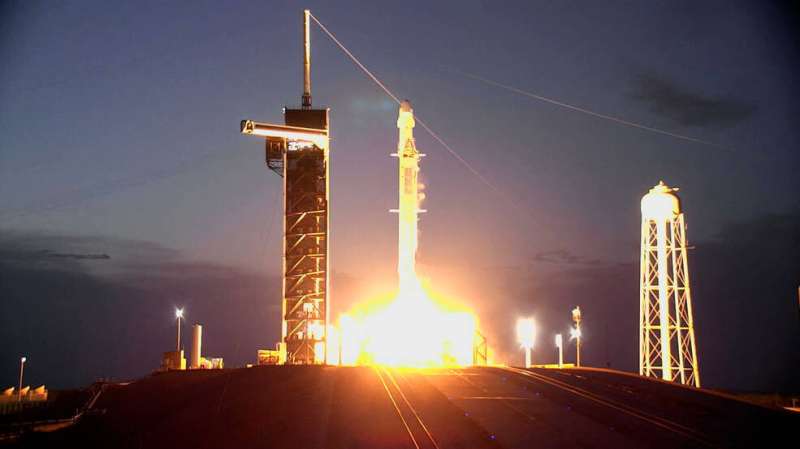
Among the science experiments being delivered, the JPL-developed EMIT instrument will help scientists determine how airborne mineral dust affects our planet.
A SpaceX Dragon resupply spacecraft carrying more than 5,800 pounds of science experiments, crew supplies, and other cargo is on its way to the International Space Station after launching at 8:44 p.m. EDT (5:44 p.m. PDT) Thursday from NASA's Kennedy Space Center in Florida.
The spacecraft launched on a Falcon 9 rocket from Launch Pad 39A at Kennedy for the company's 25th commercial resupply services mission for NASA.
Week in images: 11-15 July 2022
Friday, 15 July 2022 12:02
Week in images: 11-15 July 2022
Discover our week through the lens
Wildfire near Salamanca: before-and-after
Friday, 15 July 2022 12:00 Image:
These Copernicus Sentinel-2 images, one year apart, show the area affected by wildfire around Las Batuecas - Sierra de Francia Nature Reserve near Salamanca in western Spain.
Image:
These Copernicus Sentinel-2 images, one year apart, show the area affected by wildfire around Las Batuecas - Sierra de Francia Nature Reserve near Salamanca in western Spain. Putin dismisses Russian space chief Rogozin: decree
Friday, 15 July 2022 11:50 Russian President Vladimir Putin has relieved the head of the country's space agency, Dmitry Rogozin, of his duties, according to a decree released by the Kremlin on Friday.
The decree ordered Rogozin's dismissal "from the post of general director of the Roscosmos state space corporation." He was replaced by Deputy Prime Minister Yury Borisov.
Russian President Vladimir Putin has relieved the head of the country's space agency, Dmitry Rogozin, of his duties, according to a decree released by the Kremlin on Friday.
The decree ordered Rogozin's dismissal "from the post of general director of the Roscosmos state space corporation." He was replaced by Deputy Prime Minister Yury Borisov. Space rocket junk could have deadly consequences unless governments act
Friday, 15 July 2022 11:50 The re-entry of abandoned stages of rockets left in orbit from space launches have a six to 10 per cent chance of severely injuring or killing a human being in the next decade, according to a new UBC study.
Researchers say governments need to take collective action and mandate that rocket stages are guided safely back to Earth after their use, which could increase the cost of a launch, but
The re-entry of abandoned stages of rockets left in orbit from space launches have a six to 10 per cent chance of severely injuring or killing a human being in the next decade, according to a new UBC study.
Researchers say governments need to take collective action and mandate that rocket stages are guided safely back to Earth after their use, which could increase the cost of a launch, but Planet signs contract to provide German Federal Agencies with daily satellite imagery
Friday, 15 July 2022 11:50 Planet Labs has announced that its wholly owned subsidiary, Planet Labs Germany GmbH, has signed a new contract with the German Federal Agency for Cartography and Geodesy (BKG) to provide the agency with daily, high-resolution satellite data for crisis response, environmental and nature conservation, as well as forest and agricultural monitoring.
Access to Planet's satellite data will help
Planet Labs has announced that its wholly owned subsidiary, Planet Labs Germany GmbH, has signed a new contract with the German Federal Agency for Cartography and Geodesy (BKG) to provide the agency with daily, high-resolution satellite data for crisis response, environmental and nature conservation, as well as forest and agricultural monitoring.
Access to Planet's satellite data will help Ariane 6 central core transferred to mobile gantry
Friday, 15 July 2022 11:50 The Ariane 6 launch pad at Europe's Spaceport in French Guiana now hosts the first example of ESA's new heavy-lift rocket. This Ariane 6 combined tests model will be used to validate the entire launch system during its ground phase in readiness for the inaugural launch of Ariane 6.
The combined tests include filling tanks, and draining them in case of launch abort, count-down automated seq
The Ariane 6 launch pad at Europe's Spaceport in French Guiana now hosts the first example of ESA's new heavy-lift rocket. This Ariane 6 combined tests model will be used to validate the entire launch system during its ground phase in readiness for the inaugural launch of Ariane 6.
The combined tests include filling tanks, and draining them in case of launch abort, count-down automated seq Virgin Galactic selects Arizona for spaceplane manufacturing facility
Friday, 15 July 2022 10:34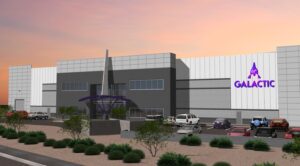
Virgin Galactic announced July 14 plans to assemble a fleet of suborbital spaceplanes in a new factory in a suburb of Phoenix.
The post Virgin Galactic selects Arizona for spaceplane manufacturing facility appeared first on SpaceNews.
To search for alien life, astronomers will look for clues in the atmospheres of distant planets
Friday, 15 July 2022 09:32 The ingredients for life are spread throughout the universe. While Earth is the only known place in the universe with life, detecting life beyond Earth is a major goal of modern astronomy and planetary science.
We are two scientists who study exoplanets and astrobiology. Thanks in large part to next-generation telescopes like James Webb, researchers like us will soon be able to measure the
The ingredients for life are spread throughout the universe. While Earth is the only known place in the universe with life, detecting life beyond Earth is a major goal of modern astronomy and planetary science.
We are two scientists who study exoplanets and astrobiology. Thanks in large part to next-generation telescopes like James Webb, researchers like us will soon be able to measure the Webb Images of Jupiter and More Now Available In Commissioning Data
Friday, 15 July 2022 09:32 On the heels of Tuesday's release of the first images from NASA's James Webb Space Telescope, data from the telescope's commissioning period is now being released on the Space Telescope Science Institute's Mikulski Archive for Space Telescopes. The data includes images of Jupiter and images and spectra of several asteroids, captured to test the telescope's instruments before science operations o
On the heels of Tuesday's release of the first images from NASA's James Webb Space Telescope, data from the telescope's commissioning period is now being released on the Space Telescope Science Institute's Mikulski Archive for Space Telescopes. The data includes images of Jupiter and images and spectra of several asteroids, captured to test the telescope's instruments before science operations o Ukrainian Space Startups
Friday, 15 July 2022 09:32 In 2016 and 2018, I was invited to Ukraine. I gave speeches about the Space Revolution at the Kyiv Polytechnic Institute, in Dnipro and other venues, and met with the Mayors, leaders of the Rada, the Ukrainian cosmonaut corps, and other space leaders, as well as several groups of their rising tech community.
The folks I met there, just a couple of years after what they refer to as the "Mai
In 2016 and 2018, I was invited to Ukraine. I gave speeches about the Space Revolution at the Kyiv Polytechnic Institute, in Dnipro and other venues, and met with the Mayors, leaders of the Rada, the Ukrainian cosmonaut corps, and other space leaders, as well as several groups of their rising tech community.
The folks I met there, just a couple of years after what they refer to as the "Mai Swarm dodges collision during climb to escape Sun's wrath
Friday, 15 July 2022 09:32 The pressure is on at ESA's mission control. An ESA satellite dodges out of the way of a mystery piece of space junk spotted just hours before a potential collision.
Now a crucial step in the spacecraft's ongoing journey to safer skies has to be quickly rescheduled, as violent solar activity related to the ramping up of the solar cycle warps Earth's atmosphere and threatens to drag it down
The pressure is on at ESA's mission control. An ESA satellite dodges out of the way of a mystery piece of space junk spotted just hours before a potential collision.
Now a crucial step in the spacecraft's ongoing journey to safer skies has to be quickly rescheduled, as violent solar activity related to the ramping up of the solar cycle warps Earth's atmosphere and threatens to drag it down 